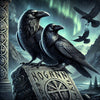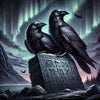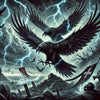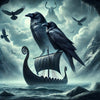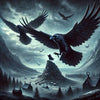Unlocking the Secrets of the Elder Futhark: A Journey Through Norse Runes
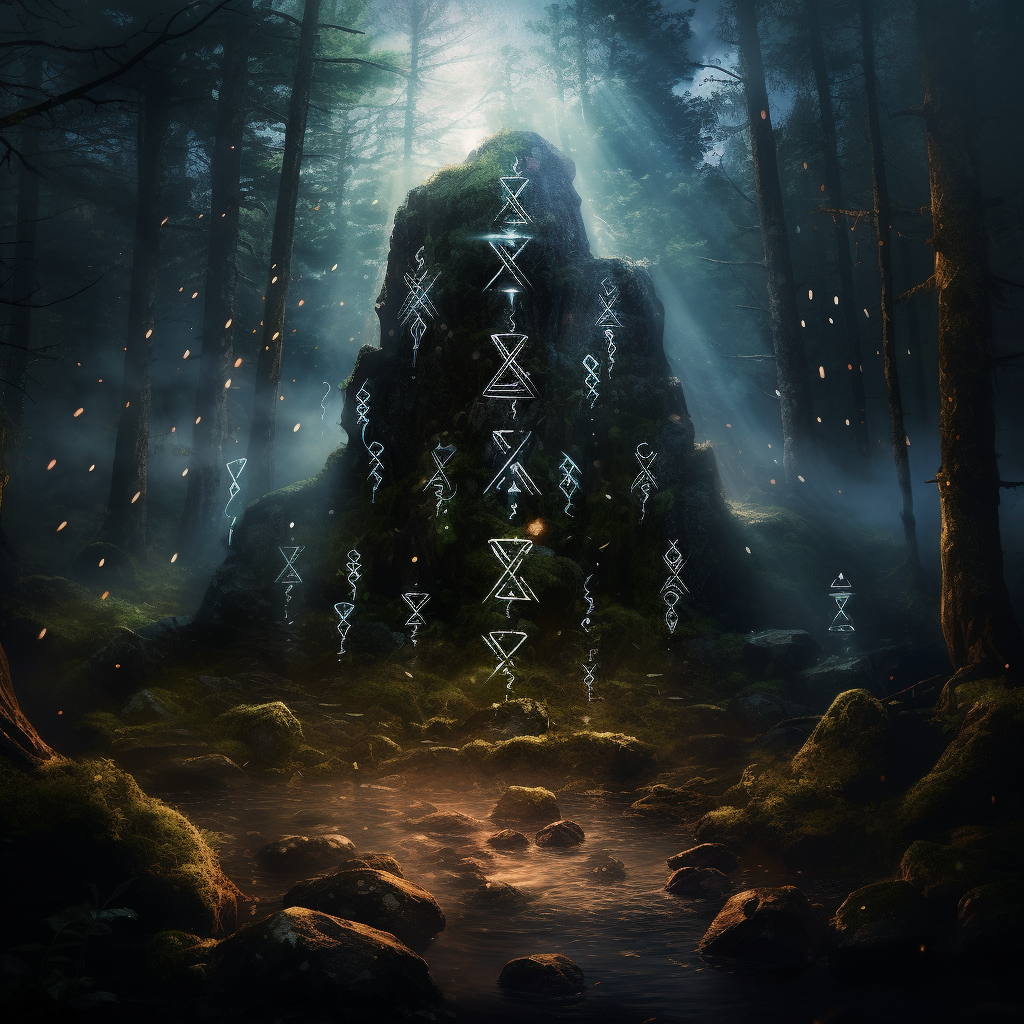
Unlocking the Mysteries of Norse Runes: A Deep Dive into the Elder Futhark
The story of the Elder Futhark is like taking a trip back to the roots of Norse history. These runes are the OGs of the runic world, dating back to around the 2nd century AD. That’s way before the Vikings started making waves. So, where did these runes come from, and why do we call them the 'Elder Futhark'? The name 'Futhark' comes from the first six runes in the set: F, U, Þ (th), A, R, and K. 'Elder' just means they’re the oldest gang in town when it comes to Norse runes. Think of them like the ancestors of the alphabets used later by the Vikings.
Now, let’s talk about where they came from. Historians believe the Elder Futhark was influenced by the Roman alphabet, but with a unique twist that made them perfect for the Germanic languages spoken by early Norse folks. These runes weren’t just about writing letters and words. Each symbol had its own meaning and story, which is pretty cool when you think about it.
The Elder Futhark was widespread across Europe. From Scandinavia all the way down to Germany, these runes were the go-to script for inscriptions on everything from weapons and jewelry to big ol’ runestones. But they were more than just a way to write. Runes were often seen as magical and were used in rituals and for protective symbols. It’s like each rune had its own superpower.
Around the 8th century, the Elder Futhark started to phase out, making room for younger and more region-specific runic alphabets. But the mark they left on history? That’s as permanent as the carvings on those ancient stones.
Understanding Each Rune of the Elder Futhark
Let's delve deeper into the world of the Elder Futhark, exploring the unique character and story behind each of the 24 runes. These ancient symbols offer a glimpse into the beliefs and values of the Norse people.
- Fehu (F): Symbolizing wealth and prosperity, Fehu is associated with material success and abundance.
- Uruz (U): This rune represents strength, vitality, and raw, untamed power, much like the wild ox it’s often linked to.
- Thurisaz (Þ): Connected to Thor, Thurisaz embodies protection and defense, symbolizing the power to overcome adversaries.
- Ansuz (A): This is the rune of communication and divine inspiration, often linked to Odin, the god of wisdom.
- Raidho (R): Signifying travel and movement, Raidho represents life's journey and the path we take.
- Kenaz (K): A symbol of knowledge and enlightenment, Kenaz is likened to a torch that guides through darkness.
- Gebo (G): Representing gifts and generosity, Gebo embodies the balance of giving and receiving.
- Wunjo (W): This rune stands for joy, pleasure, and harmony, reflecting the fulfillment of desires.
- Hagalaz (H): Symbolizing disruptive forces, Hagalaz is the rune of change, often challenging but necessary.
- Nauthiz (N): Representing need and necessity, Nauthiz is about overcoming hardships and developing resilience.
- Isa (I): Isa embodies ice, symbolizing stillness, clarity, and a moment of pause before action.
- Jera (J): This is the rune of harvest and fruitful completion, symbolizing cycles and seasons of life.
- Eihwaz (E): Representing the yew tree, Eihwaz is about endurance, stability, and facing challenges with resilience.
- Perthro (P): The rune of mystery and fate, Perthro is connected to the unknown and elements of chance in life.
- Algiz (Z): Symbolizing protection and a guardian spirit, Algiz serves as a shield and a source of support.
- Sowilo (S): This rune stands for the sun, representing success, vitality, and the energy that drives life forward.
- Tiwaz (T): Associated with the god Tyr, Tiwaz is about justice, honor, and upholding the law.
- Berkano (B): Symbolizing birth and renewal, Berkano is connected to new beginnings and growth.
- Ehwaz (E): Representing the horse, Ehwaz is about trust, partnership, and movement in harmony.
- Mannaz (M): This rune stands for humanity and the self, symbolizing human intelligence and social order.
- Laguz (L): Associated with water, Laguz represents flow, intuition, and the depths of the subconscious.
- Ingwaz (NG): Symbolizing fertility and potential, Ingwaz is like a seed waiting to sprout, embodying the promise of new life.
- Dagaz (D): Representing dawn and breakthroughs, Dagaz is about clarity, hope, and the balance between day and night.
- Othala (O): This final rune embodies heritage and inheritance, symbolizing home, legacy, and everything that forms one's identity.
And that’s a wrap on our journey through each Elder Futhark rune. These symbols provide a rich tapestry of insight into the Norse world, each one holding a story that resonates through the ages. Up next, we'll explore how these runes were woven into the fabric of Norse society.
The Role of Runes in Norse Society
Now that we've met the Elder Futhark runes, let's see how they were woven into the fabric of Norse society. These runes were more than just letters; they were a vital part of everyday life, magic, and culture in the Viking world.
Runes as a Writing System
First off, runes were the main writing system for the Norse people. But don't think of them as just an ancient version of our alphabet. Norse folks used them for all sorts of things: carving messages on wood and stone, marking possessions, and even jotting down spells. They were the go-to script for everything from epic sagas to simple trade records.
Runes in Magic and Rituals
But here’s where it gets really interesting: runes were believed to hold magical powers. The Norse saw them as more than just symbols; they were keys to unlocking the mysteries of the universe. Runes were used in rituals for protection, success in battle, or even to curse enemies. Imagine a Viking warrior carving a rune into his sword for good luck – that’s how deep these symbols were embedded in their culture.
Runes for Divination
Another fascinating aspect of runes in Norse society was their use in divination – a kind of ancient fortune-telling. People would cast runes, much like throwing dice, and read their future based on how and where they fell. This practice shows how runes were not just tools for writing but also for seeking guidance and making decisions.
Runes as Art and Symbolism
Lastly, let's not forget the artistic side of runes. Their simple yet powerful designs made them perfect for Norse art. They adorned everything from jewelry to ships, serving both a decorative and symbolic purpose. Runes were a way for the Norse to express their identity and beliefs, turning everyday objects into works of art.
In essence, the Elder Futhark runes were a cornerstone of Viking life. They were tools for communication, keys to the mystical, and a fundamental part of Norse identity. In our next section, we’ll look at how these ancient symbols have found their way into modern times and continue to fascinate us today.
The Evolution of Runic Alphabets
As we've journeyed through the world of the Elder Futhark runes, one thing is clear: they're more than just ancient symbols; they're a dynamic script that evolved over time. In this section, we’ll explore how the Elder Futhark gave birth to later runic alphabets and how these changes reflect the shifting tides of Norse history.
Transition to Younger Runic Forms
Around the 8th century, something interesting happened. The Elder Futhark, with its 24 runes, began to change. As the Norse languages evolved, so did their writing needs. This led to the development of newer runic forms, like the Younger Futhark and the Anglo-Saxon Futhorc.
The Younger Futhark: A Streamlined Script
The Younger Futhark, popular during the Viking Age, was like the sleeker, more streamlined cousin of the Elder Futhark. It trimmed down the number of runes to between 16 and 18. This wasn’t just about simplifying things; it was an adaptation to the changing sounds and structures of the Norse language. The Younger Futhark runes are found all over Viking artifacts and runestones, telling tales of conquests, trade, and everyday life.
The Anglo-Saxon Futhorc: An Expansion
Meanwhile, in areas like England, where the Anglo-Saxons were putting down roots, the Elder Futhark morphed into something a bit different. The Anglo-Saxon Futhorc expanded the rune set to include up to 33 characters. This adaptation was influenced by the needs of Old English, a language with its own unique sounds and complexities.
The Runes’ Cultural Journey
What’s truly fascinating about the evolution of these runes is how they reflect the journey of the Norse people themselves. As they traveled, settled, and mingled with different cultures, their language and writing adapted. Runes were more than just a writing system; they were a living, breathing part of Norse culture, changing and growing as the people did.
The Enduring Legacy of the Elder Futhark
Despite these evolutions, the Elder Futhark has never really faded into obscurity. Its symbols still capture our imagination and are often seen as the quintessential Norse runes. Their simplicity and mystery continue to draw in enthusiasts, scholars, and artists alike.
In the next section, we'll leap forward to the present day and see how these ancient runes have found a place in our modern world. Stay tuned to discover the Elder Futhark’s enduring legacy in contemporary culture!
The Elder Futhark Today
Fast forward from the Viking Age to the present, and the Elder Futhark runes still hold a magnetic pull. In this final section, let's explore how these ancient symbols have transcended time and found their way into our contemporary world, continuing to fascinate and inspire.
Modern Paganism and Spirituality
One of the most prominent areas where the Elder Futhark runes have made a comeback is in modern paganism and spiritual practices. Neo-pagans and those following Asatru, a faith based on ancient Norse beliefs, often use runes in their rituals. Runes are used for divination, much like they were centuries ago, offering guidance and insight. They also serve as symbols for meditation and personal growth, with each rune’s ancient meanings providing spiritual lessons.
Runes in Art and Design
The aesthetic appeal of the Elder Futhark hasn't gone unnoticed in the art world. From tattoos to graphic design, these runes are appreciated for their stark and powerful simplicity. Artists and designers often draw on these symbols for their ability to convey deep meanings in just a few strokes, integrating them into works that blend ancient mystique with modern style.
Educational and Linguistic Interest
There's also a growing interest in runes among historians and linguists. As a key to understanding ancient Norse culture and language, the Elder Futhark is a subject of academic study. Workshops and courses on how to read and write in runes have become popular, appealing to those fascinated by linguistics and ancient history.
Runes in Popular Culture
Let's not forget pop culture, where Norse mythology has seen a resurgence. Movies, TV shows, and books often feature Norse runes, sometimes accurately and other times more liberally interpreted. They add an element of ancient mysticism and authenticity to stories rooted in Norse legends.
The Elder Futhark’s Timeless Appeal
What's clear is that the Elder Futhark runes are more than just relics of the past. They are living symbols that continue to evolve in meaning and relevance. Whether it’s through spiritual practices, artistic expressions, educational pursuits, or just a general fascination with Norse culture, these ancient runes have secured their place in our modern world.
As we wrap up our exploration of the Elder Futhark, it's evident that these ancient symbols are not just historical artifacts but a timeless link to our past, enriching our present and continuing to inspire our future.
Conclusion
As we conclude our journey through the fascinating world of the Elder Futhark, it’s clear that these ancient Norse runes are more than just a collection of symbols from a bygone era. They are a bridge connecting us to the rich tapestry of Norse history, culture, and mythology. From their origins in the 2nd century to their presence in our modern lives, the Elder Futhark runes have traversed centuries, evolving yet retaining their mystical allure and symbolic power.
Through this exploration, we’ve seen how these runes were not just a means of communication for the Norse people but a profound element of their daily lives, imbued with magic, art, and spirituality. The transition from the Elder Futhark to younger runic forms reflects the dynamic nature of language and culture, showing how the runes adapted to the changing world around them.
Today, the Elder Futhark continues to captivate us, finding its place in modern spiritual practices, artistic endeavors, academic studies, and popular culture. These runes remind us of the enduring human fascination with symbols and the stories they tell, transcending time and geography.
In essence, the Elder Futhark runes offer us a window into the past, a tool for personal and spiritual reflection, and a source of artistic inspiration. They remind us of the power of symbols to convey deep meanings and connect us across generations. As we keep exploring and interpreting these ancient runes, we continue to keep the spirit of the Norse world alive in our contemporary society.
Thank you for joining me on this deep dive into the world of Norse runes. May the wisdom of the Elder Futhark inspire and enlighten your path, just as it has for countless others across the ages.
